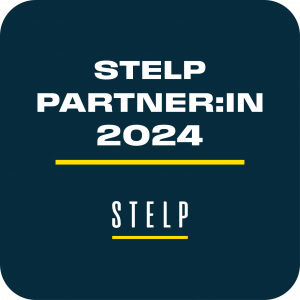Our motivation is to drive forward sustainable developments on many different levels. To do this, we look beyond the boundaries of individual isolated topics.
Due to its enormous consumption of resources and energy, the construction industry is considered a key factor in achieving climate targets. Necessary change processes are the basis for intelligent solutions in architecture and design.
This is precisely where our focus lies.
THE FOUNDERS
ANDREA HEROLD
Consulting & Sustainability Reporting (CSRD & GRI)
After holding various positions in international corporations as an assistant to the management, including at Johnson & Johnson, SAP and HUGO BOSS, she specialised in the topic of sustainability in design and architecture.
As a consultant, she develops and supports sustainability strategies for companies. In workshops, she provides in-depth insights into current market developments and supports sustainability pioneers in their positioning.
She conceptualises and prepares sustainability reports in accordance with the European CSRD and international GRI standards, which transparently present both the status quo and the sustainability strategy.
PROF. TINA KAMMER
Dipl. Ing. Architect
Tina Kammer has been following developments in the field of sustainability since the 1980s. After eleven years as a cabinet maker, she worked for three years at the architecture firm Jestico + Whiles in London after completing her studies. Back in Germany, she realised further international projects in the field of brand architecture for companies such as BMW, MINI, IBM and as a project manager at HUGO BOSS.
As a source of inspiration, she looks beyond the boundaries of individual isolated topics and is a sought-after expert at lectures and on international juries. Through her voluntary engagements, she actively supports change processes in the construction industry. Her Studio InteriorPark. specialises in sustainable architecture and design concepts.
Since 2022, she has been a professor of architecture with a focus on sustainable construction at the IU International University.
MEMBERSHIPS AND ENGAGEMENTS
Supporting Member of
Architects for Future
We support and promote the transformation towards circular building. The building sector is responsible for about 40% of CO2 emissions worldwide and is therefore a crucial lever in reducing GHG to achieve the Paris Climate Agreement.
Initiatives and associations are elementary for the bundled contact to politics and economy. Groundbreaking changes are urgently needed and must be implemented in practice as soon as possible.
For more information on the work of Architects for Future and their commitment, please visit their website and social media.
Circularity Partner of
Concular
Concular is the market leader for material passports and the recycling of materials: simple, economical and ecologically measurable.
Circularity partners are companies, offices and research institutions that have recognised that the circular economy only works together.
Together we form the new circular value chain that closes material loops measurably and economically – from planning to construction, from deconstruction to processing, from testing to reuse.
Partner of STELP e. V.
STELP e. V. is a civilian aid organization from Stuttgart that alleviates hardship through rapid access to food, sanitary products and medical care.
What is special about STELP? A donation for aid projects arrives without deductions and 100% on site. STELP has set up the partner program to finance the structural costs. We are proud to be able to support STELP e. V. as a long-term partner. Through our donations to the partner program, we ensure that STELP can continue to help people in need quickly and in an impact-oriented manner in the future.
More about STELP e. V.



